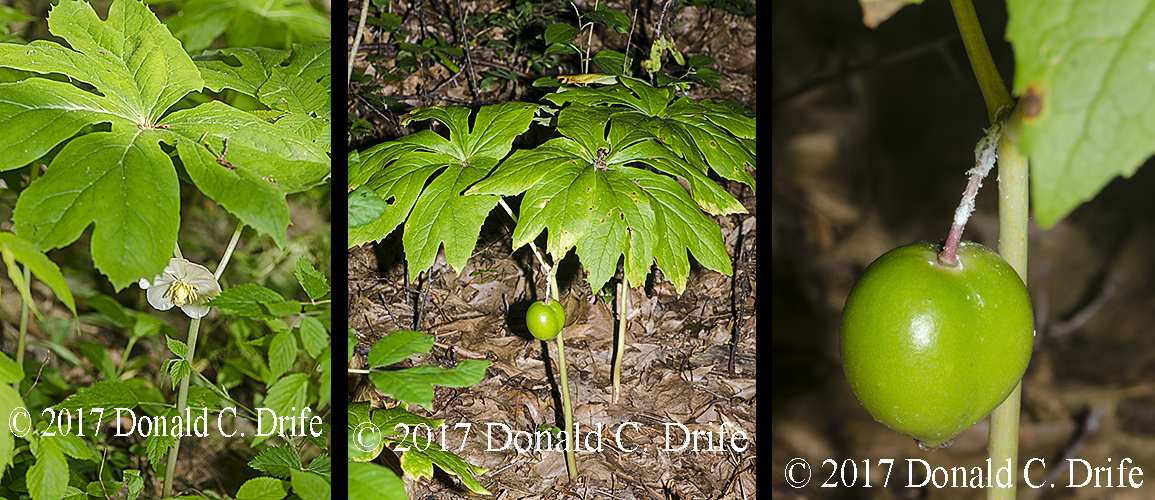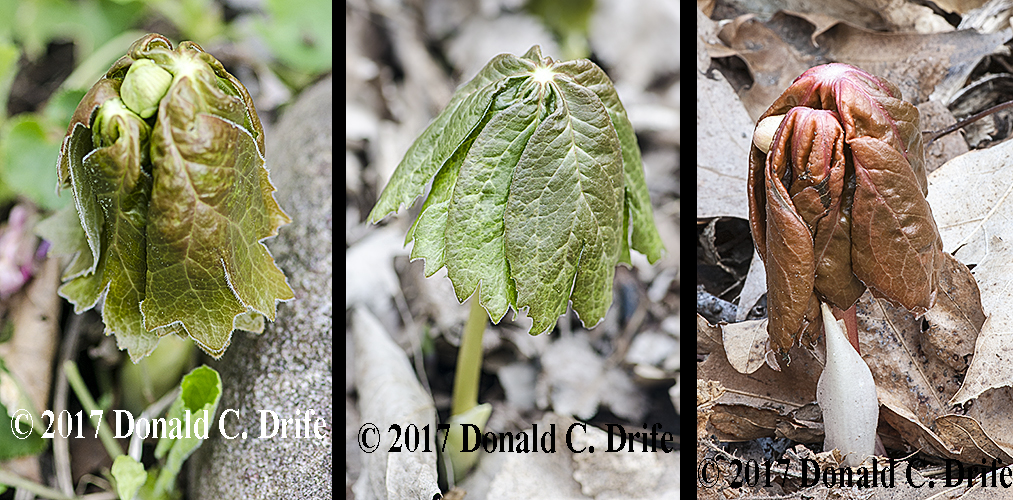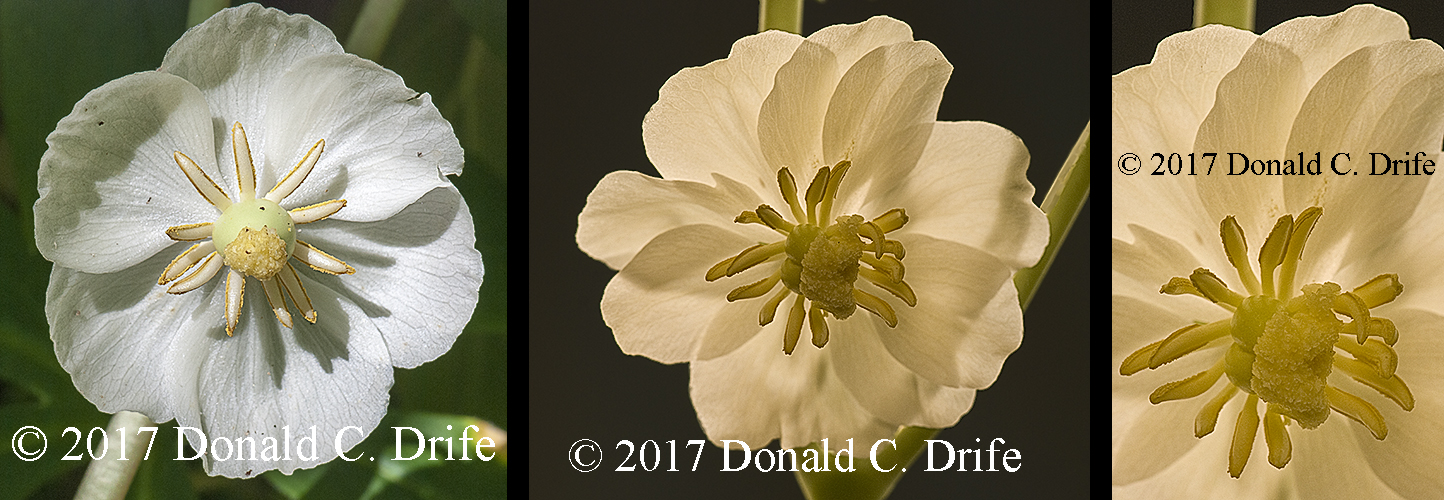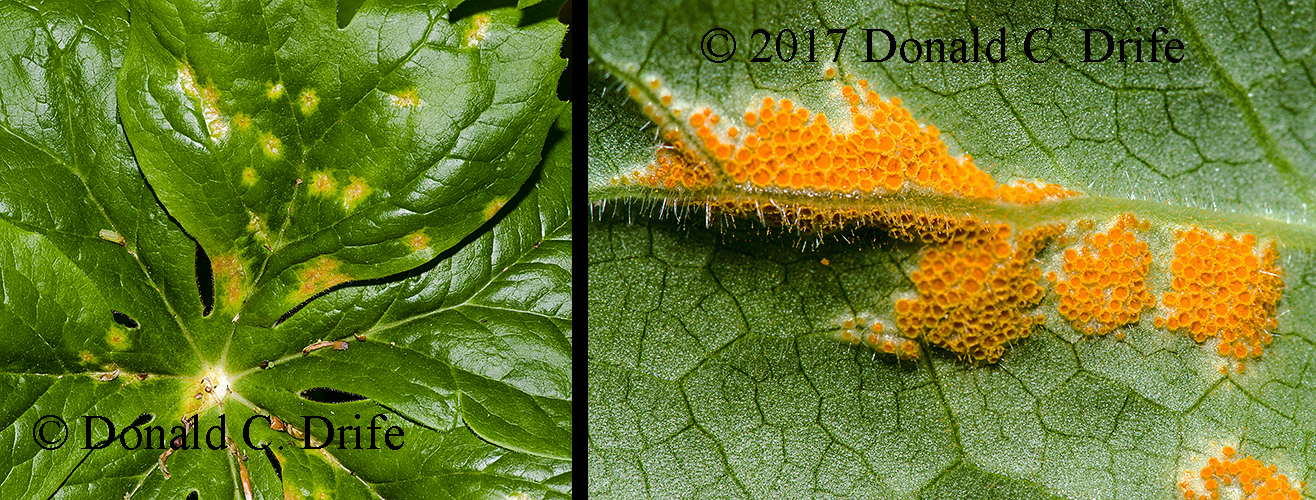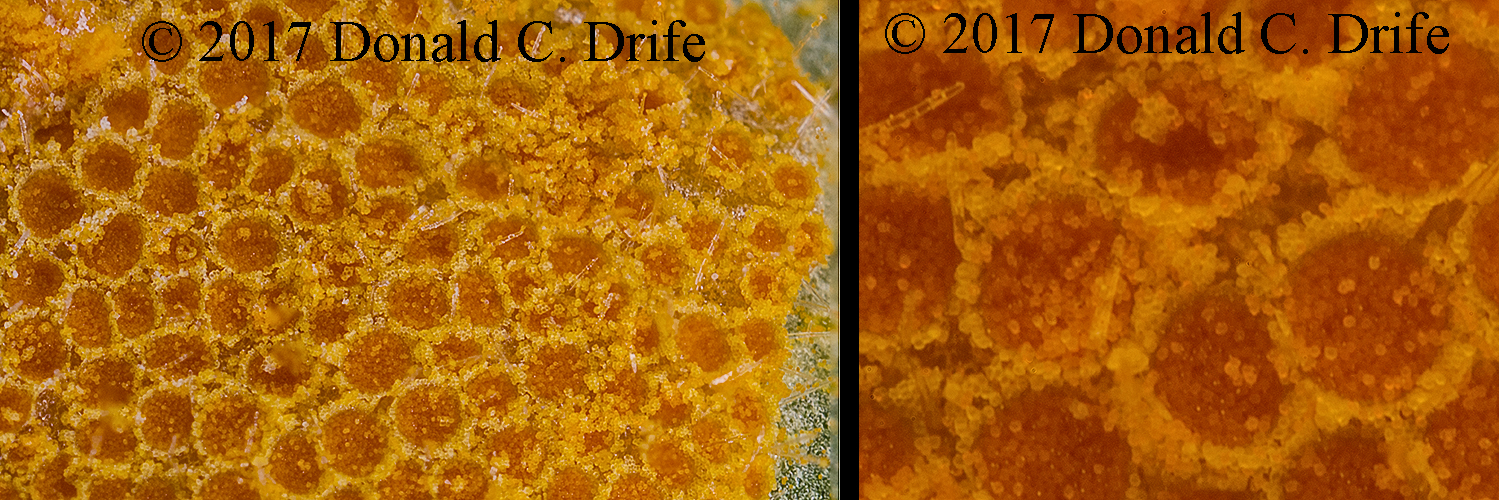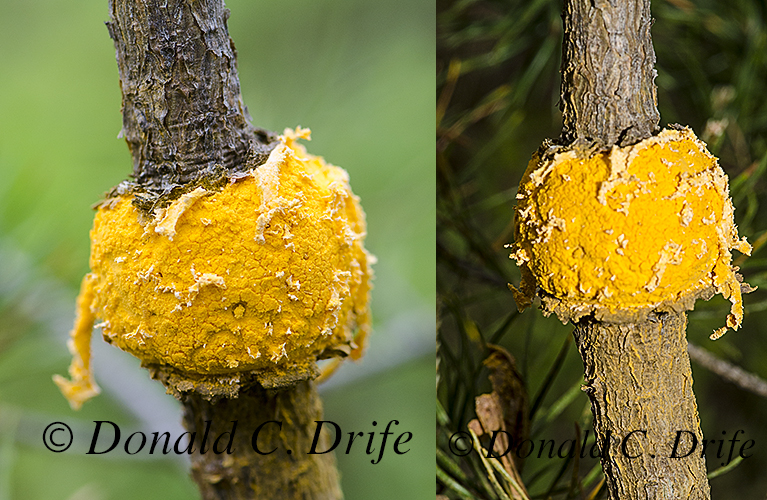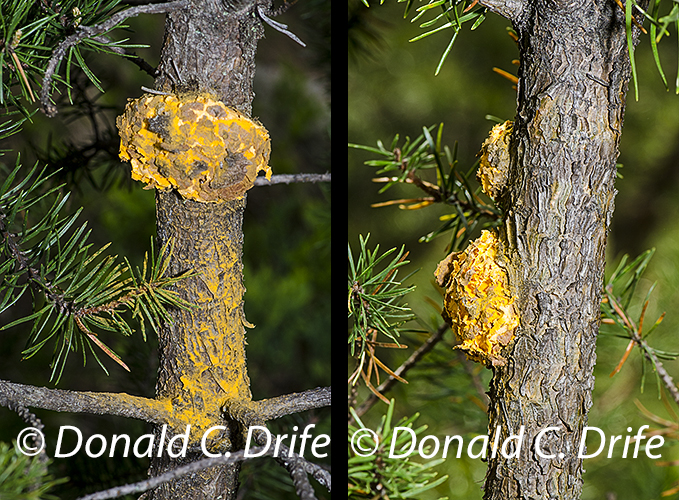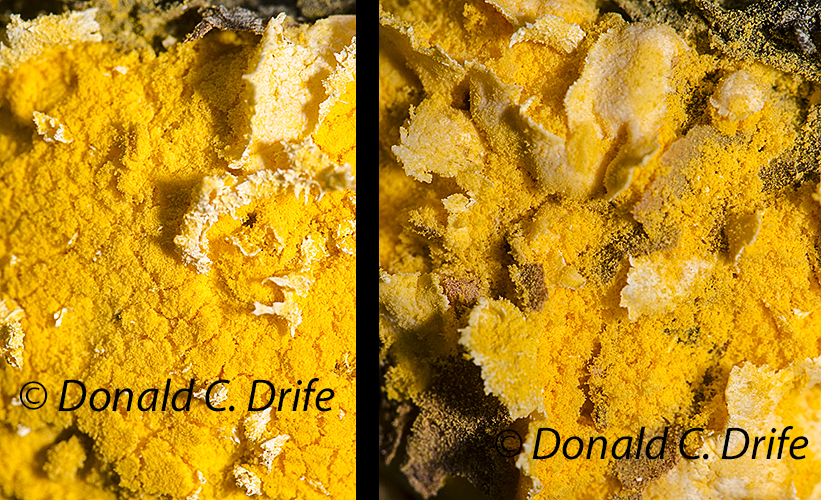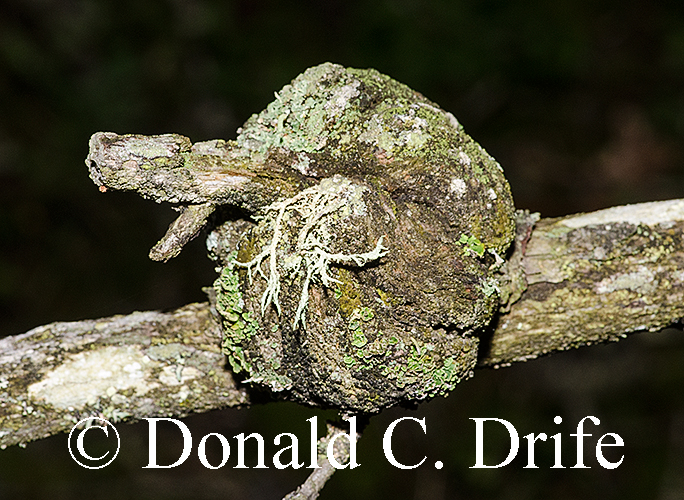Mayapple (Podophyllum peltatum) is common in rich woods in southern Michigan. Flowering in the spring, its fruit ripens in the late summer, and then the plants die back for the season. Emerging in early spring, plants resemble small umbrellas on the forest floor. Early leaves are sometimes frost damaged which causes reddish spots in the center of the leaves. Leaves are peltate with the petiole (leaf stalk) attached in the center of a mostly round leaf blade. Plants with single leaves do not flower. Larger two-leaved plants have flowers hidden under the leaves. Mayapple flowers produce no nectar to attract pollinators. I see bumblebee queens gathering pollen from the flowers. Some studies seem to indicate that pollinators are attracted by other nearby woodland flowers then visit Mayapples. I saw one bumblebee visit a Mayapple flower after feeding on Wild Geranium nectar. Fruiting is not needed because colonies reproduce via rhizomes.
All parts of the plant including the seeds are poisonous except for the flesh of the ripe fruits. Another common name is Wild Mandrake eluding to its poisonous nature. A friend became ill after eating ripe fruit so use caution if you experiment with eating this plant. Whenever I eat a new species of wild food I always keep an uncooked sample and eat only a small amount. You can have an allergic response to a plant other people safely eat. I have found ripe fruits only three times in my life. Twice, I found single ripe fruits and only once did I find enough to make jam. Raccoons followed us through the colony and climbed into the basket as I carried it picking fruit. Fruits have a sweet citrus flavor.
I found a colony along the Red Cedar River on the campus of Michigan State University with multiple carpels (forma polycarpum) and additional flower parts. Beal Botanical Garden’s collection manager gathered a few plants for their garden and gave me a single non-flowering plant. Seventeen years later they form a stand of 80 stems in my woodland garden. They have never set fruit.
A bright orange rust, Mayapple Rust (Allodus podophylli) occurs on Mayapples. This is the only species of rust reported from Mayapple. It disfigures the plants but normally causes no harm. I find the aeciospores attractive when magnified. Mayapple Rust requires no alternate host and completes its lifecycle on the Mayapple. This rust was placed in the artificial genus Puccinia until recent studies placed it in the long disused genus Allodus.
Now is the time to look for ripe Mayapples. Get out in a rich woods in southern Michigan and see what you find. It might not be a Mayapple but it’s always fun just to look.
Copyright 2017 by Donald Drife
Webpage Michigan Nature Guy
Follow MichiganNatureGuy on Facebook

